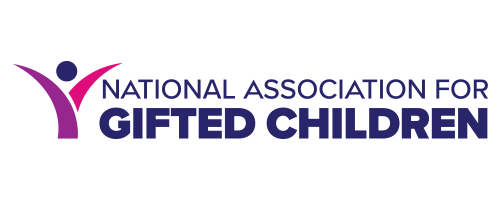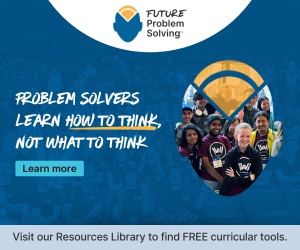Identification
Identification
While some commonalities exist across giftedness, one size does not fit all. Gifted learners exhibit different characteristics, traits, and ways to express their giftedness. Various issues must be considered for identification:
-
Giftedness is dynamic, not static. Identification needs to occur over time, with multiple opportunities to exhibit gifts. One test at a specific point in time should not dictate whether someone is identified as gifted. Read NAGC's position statement, The Role of Assessments in Identifying Gifted Individuals.
-
Giftedness is represented through all racial, ethnic, income levels, and exceptionality groups. Underrepresentation is widely spread. In 2017–2018, the Office of Civil Rights data indicated Black and Hispanic students were 55% and 77% as represented within the identified gifted population as they were in the national K–12 student population. Asian American and White students were 196% and 108% as represented. [1, 2, 3] Learn more about identification in diverse gifted populations and read NAGC's position statement, Identifying and Serving Culturally and Linguistically Diverse Students.
-
Giftedness may be exhibited within a specific interest or category—and even a specific interest within that category. Professionals must seek ways to gather examples across various domains and contexts, using both objective and subjective identification instruments. See below.
-
Early identification in school improves the likelihood that gifts will be developed into talents.
Identification Process
Typically, identification policies and procedures are determined at the district level. Because no two gifted children are alike, it is important to collect information on both the child's performance and potential through a combination of objective (quantifiably measured) and subjective (personally observed) identification instruments in order to identify gifted and talented students.
Districts typically follow a systematic, multi-phased process for identifying gifted students to find students who need services beyond the general education program:
-
Nomination or identification phase;
-
Screening or selection phase;
-
Placement phase.
In the nomination and screening phase, various identification tools should be used to eliminate bias.
Sample Identification Instruments
Nominations: Self, Peer, Teacher, Administrator, Parent. Nominations help cast a wide net for identifying as many students as possible who might qualify for gifted services. However, if they are required before testing, a large portion of gifted and talented students may be missed and can cause false negative rates to exceed 60% [6]. Often, gifted characteristic checklists, inventory, and nomination forms are completed by students, parents, teachers, and administrators to provide an informal perspective.
Student Cumulative Records. Grades, state and standardized tests are sometimes used as data points during the gifted identification process.
Teacher Observations & Ratings: Learning & Motivation Scales. Teachers may make observations and use rating scales or checklists for students who exhibit a certain trait or characteristic during instruction. Sample rating scales include Scales for Rating Behavioral Characteristics of Superior Students (Renzulli & Smith, 1977), Purdue Academic Rating Scales (PARS), Whitmore or Rimm Underachievement Scales, and Cultural Characteristics Scales. Unfortunately, teacher rating scales are not easily comparable across teachers which may affect who is included and excluded from gifted programs in unanticipated ways. [7]
Portfolios & Performances. Portfolios or work that is collected over time should include student reflections of their products and/or performances. Portfolios may be developed for both academic (language arts, math) and creative (speech, arts, music) pursuits.[8]
Student Educational Profiles. While many forms may be used to identify gifted children, an academic or artistic case study approach can offer a more comprehensive process. Case studies may include data, observations, and growth demonstrated in various settings.
-
Long, D. A., McCoach, D. B., Siegle, D., Callahan, C. M., & Gubbins, E. J. (2023). Inequality at the starting line: Underrepresentation in gifted identification and disparities in early achievement. AERA Open, 9(1), 1–25. https://doi.org/10.1177/23328584231171535
-
Peters, S. J., Johnson, A., Makel, M. C., & Carter, J. S. (2024). Who’s got talent for identifying talent? Predictors of equitable gifted identification for black and Hispanic students. Gifted Child Quarterly, 68(3), 238–246. https://doi.org/10.1177/00169862241240483
-
U.S. Department of Education Office of Civil Rights. (2018). National data: Courses and Programs. https://civilrightsdata.ed.gov/profile/us?surveyYear=2017
-
Gubbins, E. J., Siegle, D., Ottone-Cross, K., McCoach, D. B., Langley, S. D., Callahan, C. M., Brodersen, A. V., & Caughey, M. (2021). Identifying and Serving Gifted and Talented Students: Are Identification and Services Connected? Gifted Child Quarterly, 65(2), 115–131. https://doi.org/10.1177/0016986220988308
-
Peters, S. J., Matthews, M. S., McBee, M. T., & McCoach, D. B. (2014). Beyond gifted education: Designing and implementing advanced academic programs. Prufrock Press Inc. https://doi.org/10.4324/9781003233299
-
McBee, M. T., Peters, S. J., & Miller, E. M. (2016). The impact of the nomination stage on gifted program identification: A comprehensive psychometric analysis. Gifted Child Quarterly, 60(4), 243–311. https://doi.org/10.1177/0016986216656256
-
McCoach, D. B., Peters, S., Gambino, A. J., Long, D., & Siegle, D. (2024). Who are we measuring? Teacher effects in gifted and talented teacher rating scales. Exceptional Children, 90(4), 422–441. https://doi.org/10.1177/00144029241247035
-
Callahan, C. M. (2023). Professional measurement standards and identification. In S. Hunsaker (Ed.) Identification: The theory and practice of identifying students for gifted and talented education services, (pp. 143–165). Taylor & Francis. https://doi.org/10.4324/9781003419419


